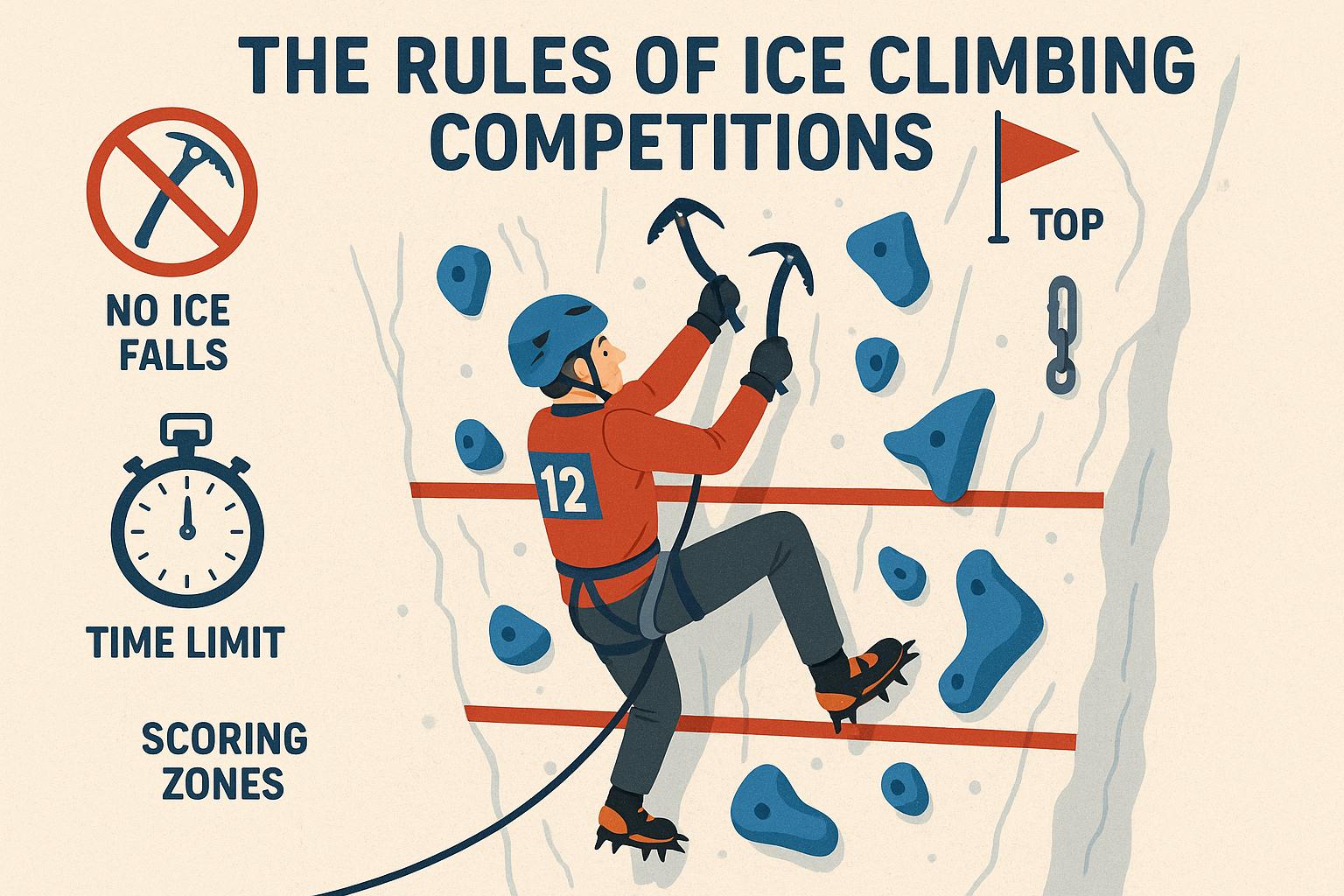Overview of Ice Climbing Competitions
Ice climbing competitions are thrilling events that bring together elite climbers to test their prowess on vertical ice structures. These events typically involve either lead climbing or speed climbing formats. Each format follows specific rules designed to ensure fair play and push the limits of the climbers’ abilities.
Lead Climbing Competitions
In lead climbing competitions, the primary goal is for climbers to successfully ascend a route using a rope for protection. As they progress, competitors must clip the rope into designated fixed points strategically placed along the route. These routes are curated with varying ice fixtures that test different climbing skills, and climbers are evaluated based on how high they ascend on the route before falling or achieving completion.
Route Difficulty: Each route has a set difficulty grade, and climbers typically have a brief preview period before competing. This preview allows them to assess the route’s challenges, determine the difficulty of the fixtures, and strategize their approach.
Timing: Although speed is not the primary focus in lead climbing, there is usually a time limit within which climbers must complete their attempts. This limitation adds pressure and requires climbers to balance speed with precision and safety during their climb.
Scoring: Climbers earn points based on the highest hold they reach during their climb. This scoring method emphasizes a combination of strategy, skill, and endurance, as competitors aim to achieve the highest point on the graded route before time runs out or they fall.
Speed Climbing Competitions
In contrast to lead climbing, speed climbing competitions focus heavily on ascending a route as quickly as possible. These events often employ standardized paths, which ensure consistency in timing and allow for fair comparison among climbers.
Standardized Routes: Organizers set up identical routes for each competitor to climb. This uniformity is crucial for maintaining fairness and ensures that every participant faces the same challenges and has the opportunity to set comparable times.
Timing: Competitors are timed meticulously, from the moment they leave the starting mark until they make contact with a strike pad positioned at the top of the climb. This precise timing is central to determining their performance in the competition.
Scoring: The climber with the fastest ascent time wins the competition. The emphasis on speed requires competitors to perfect their techniques, minimize errors, and maximize efficiency in their movements.
Equipment Regulations
Ice climbing competitions necessitate the use of specialized gear, which includes items such as helmets, harnesses, ice axes, and crampons. These pieces of equipment must comply with international safety and performance standards, such as those established by the International Climbing and Mountaineering Federation (UIAA). Proper equipment is not only critical for safety but also plays a significant role in the climbers’ overall performance and agility during competitions.
Judging and Appeals
Judges oversee ice climbing competitions, ensuring that climbers adhere to all governing rules throughout their attempts. These judges are tasked with scoring the climbers and may impose penalties for infractions like falling, failing to secure a hold, or bypassing necessary clipping points. Should competitors disagree with a judging decision, there are procedures in place for appeals. However, these appeals must be initiated immediately following the completion of a climb to be considered valid within the competition framework.
Safety Considerations
Safety is paramount in ice climbing competitions. Numerous regulations are in place to protect all participants. Event organizers provide specialized equipment and enforce strict guidelines to minimize the risks inherent in the sport. In addition, comprehensive emergency protocols are established to address any accidents or emergencies that may occur during the competition. Proper safety measures not only ensure the well-being of the athletes but also allow them to focus on their performance without undue concern.
In summary, ice climbing competitions are intricate events characterized by rules designed to emphasize safe conduct, fairness, and the demonstration of exceptional skill. Whether structured in lead or speed climbing formats, these competitions present an opportunity for climbers to showcase their talents in a demanding and exhilarating environment. These events highlight the physical and strategic elements of ice climbing, providing a stage for competitors to achieve remarkable feats under exacting conditions. Participants and enthusiasts alike can learn more about the specifics of these competitions, as well as the organizations involved, by exploring the official websites of bodies such as the UIAA.
